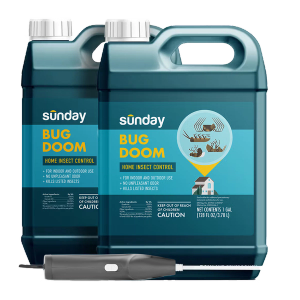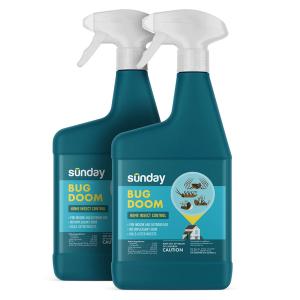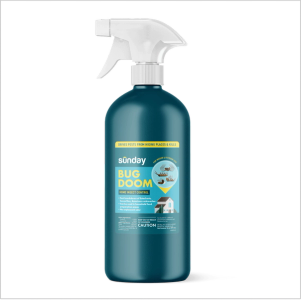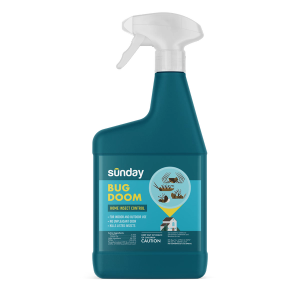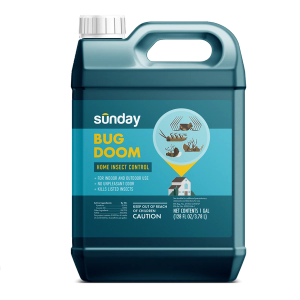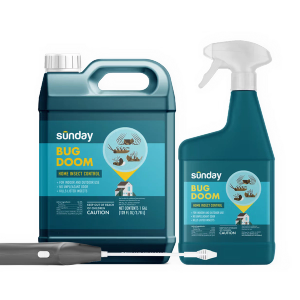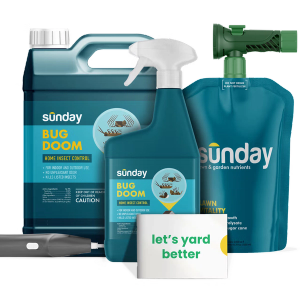What is Integrated Pest Management?
Integrated Pest Management, also known as IPM, is the most sustainable approach to keeping insect or insect-like pest infestations at bay. The broad-based, combined practices of IPM are built on proactive and preventive measures that aim to suppress and control the pest problem while minimizing risks to people and the environment. Under the IPM approach, it’s important to implement preventive measures alongside physical and mechanical actions, only reaching for chemical control when absolutely needed. Overuse of chemicals can not only negatively affect you and your family’s health, but also it can negatively affect your soil’s health and encourage the pest problem to return.
Defining insects & insect-like pests
When most people think of insects, they imagine all types of crawling, insect-like creatures. But, not all things we consider to be "insects" are actually insects. An insect by definition is an organism that has six legs and usually one to two pairs of wings. Ants, beetles, bees, aphids, mosquitoes, butterflies, and true bugs are all examples of types of insects we commonly interact with. Other organisms like spiders, ticks, centipedes, millipedes, pillbugs (and other bugs with more than six legs) fall into different categories and are NOT actually insects. However, a way we can categorize these organisms and true insects together is to refer to them as "arthropods." Arthropods are invertebrate animals (meaning they don’t have backbones) that include things like insects, insect-like bugs (e.g. spiders, ticks, millipedes, etc.) and crustaceans (think, crabs and lobster). To be inclusive of insects and all insect-like pests, going forward we’ll refer to them as arthropods.
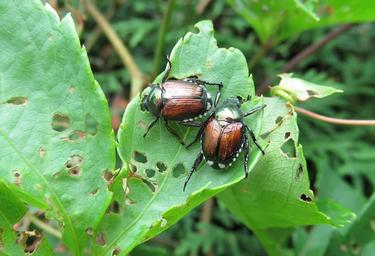
Using IPM for insects
While the best defense against any pest is a healthy, well maintained lawn and home, you can and should use IPM as a complement to your home and lawn care routine. This will help you spot and proactively manage a potential pest problem before it becomes a full-scale infestation. Here’s what we recommend to manage your home and yard for all types of arthropod pests:
#1 Take preventive action
Remove sources of food, water, shelter, and access to living and recreational space for common arthropod pests you may encounter. Some examples of preventive actions include:
- Maintaining clean eating, storage, trash, and compost areas in the home and yard
- Reducing clutter in areas of home and yard.
- Weatherization (e.g. sealing areas where pests can enter) of the yard or home
- Removing trash, junk, and/or overgrown vegetation/house plants from the home or yard
- Installing pest barriers prior to pest presence (caulking cracks and crevices, setting up window screens, planting native plants for climate/region, etc.)
- Removing any forms of standing or stagnant water in home and yard
#2 Monitor
Regularly inspect your home, lawn, and garden(s). Look for signs of:
- Arthropod pest presence (e.g. pest populations, pest habitat like mounds, etc.)
- Symptoms of an unhealthy lawn or plants (damaged plants and thinning or browning grass)
- Signs of household damage (visible damage to food, building structure, clothing items, etc.)
#3 Identify pest
Proper identification of a pest is key to an effective IPM strategy. Even when species are closely related or look alike, they can have completely different habitat, life cycle, and behavior patterns. Understanding where they live and how they survive will help you properly and proactively manage for them! Here’s some of our best suggestions for arthropod pest ID guides:
- Sunday Indoor Pest Guide
- Sunday Outdoor Pest Guide
- Department of Entomology
- NPMA Field Guide Pro
- IDL Factsheets
- Purdue Extension Entomology
#4 Exclusion and prevention
Utilizing your knowledge of the arthropod, prevent the breeding and growth in population size through physical deterrents.
- Utilize physical barriers to prevent entry to home and yard spaces like sticky tape, copper mesh, caulk, screens, fill gaps, etc.
- Squashing, trapping, washing off, or pruning out pests from home and yard
- Prevent and limit breeding around your home and yard by removing standing water, moving plants into the sun, removing wood debris/piles, and maintaining good sanitation near trash areas
- Using mulch for weed control around foundation and landscaped areas
#5 Chemical control, if necessary
At Sunday, we recommend only reaching for chemicals to solve a pest issue in your home and yard when absolutely necessary. When choosing chemicals to utilize in your home or yard, we recommend Sunday Pest Control Products. Here’s the breakdown of products we offer:
#6 Evaluate
Reviewing what pest control measures you took, when, and to what effect is an important step in IPM for insect prevention and management, so you can best understand effectiveness and evaluate what additional preventive measures, if any, should be taken.
Additional IPM tips
If an existing lawn is susceptible to frequent and severe insect damage, such as chinch bug damage on a St. Augustine lawn, you should consider the following:
- Completely renovating the lawn with a different grass species or an improved cultivar resistant to the problematic pest
- Additionally, you can consider planting plants with homeopathic benefits to deter pests in your yard to complement your IPM practices
Cited sources
https://www.epa.gov/ipm/introduction-integrated-pest-management https://nysipm.cornell.edu/whats-bugging-you/ http://ipm.ucanr.edu/QT/ipmbeneficialscard.html


